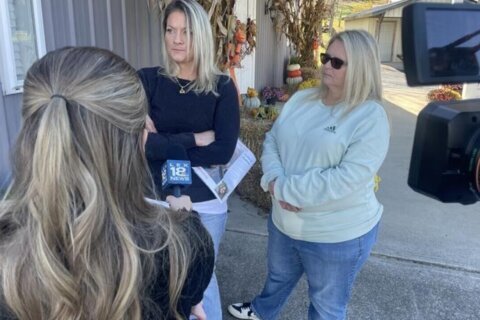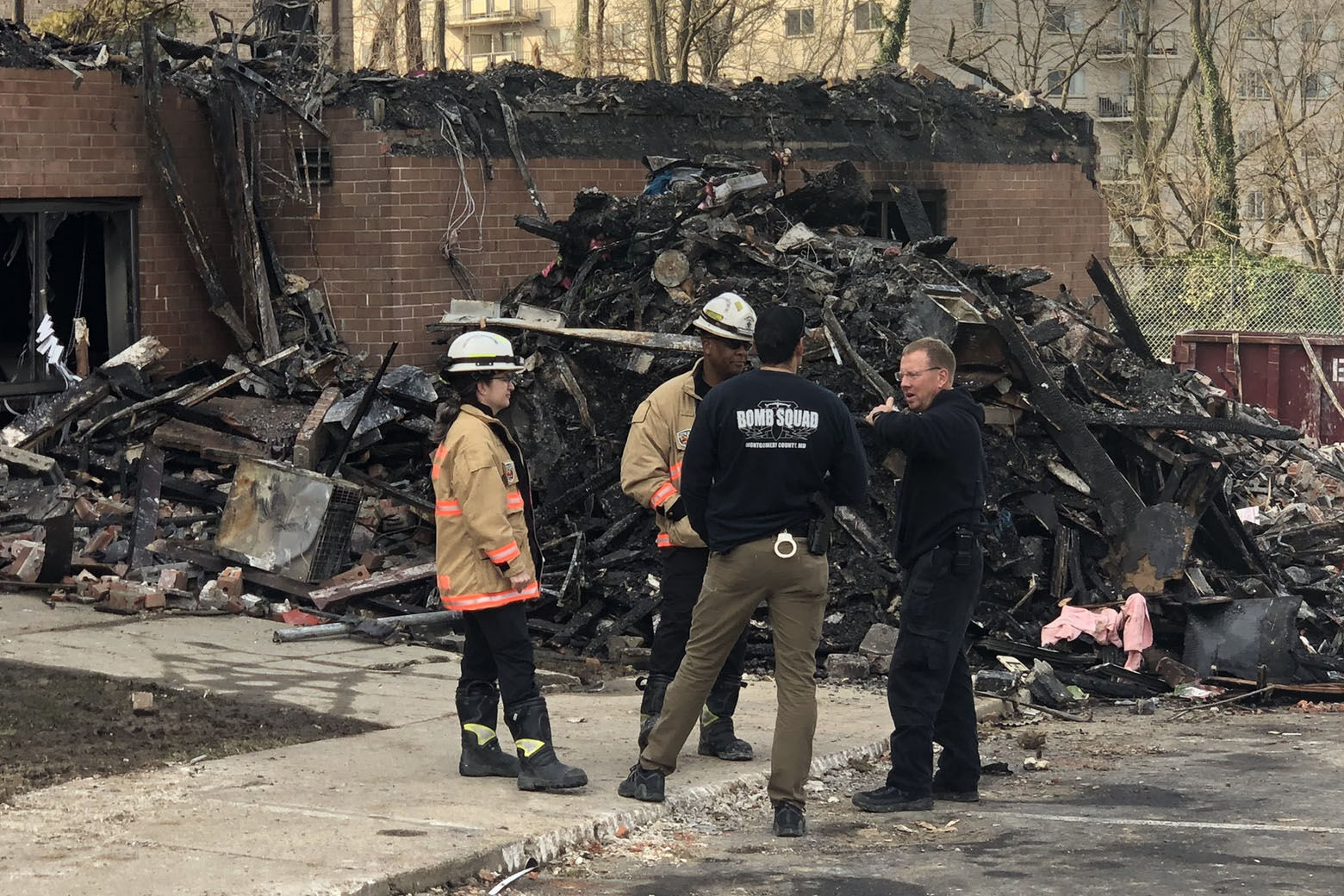
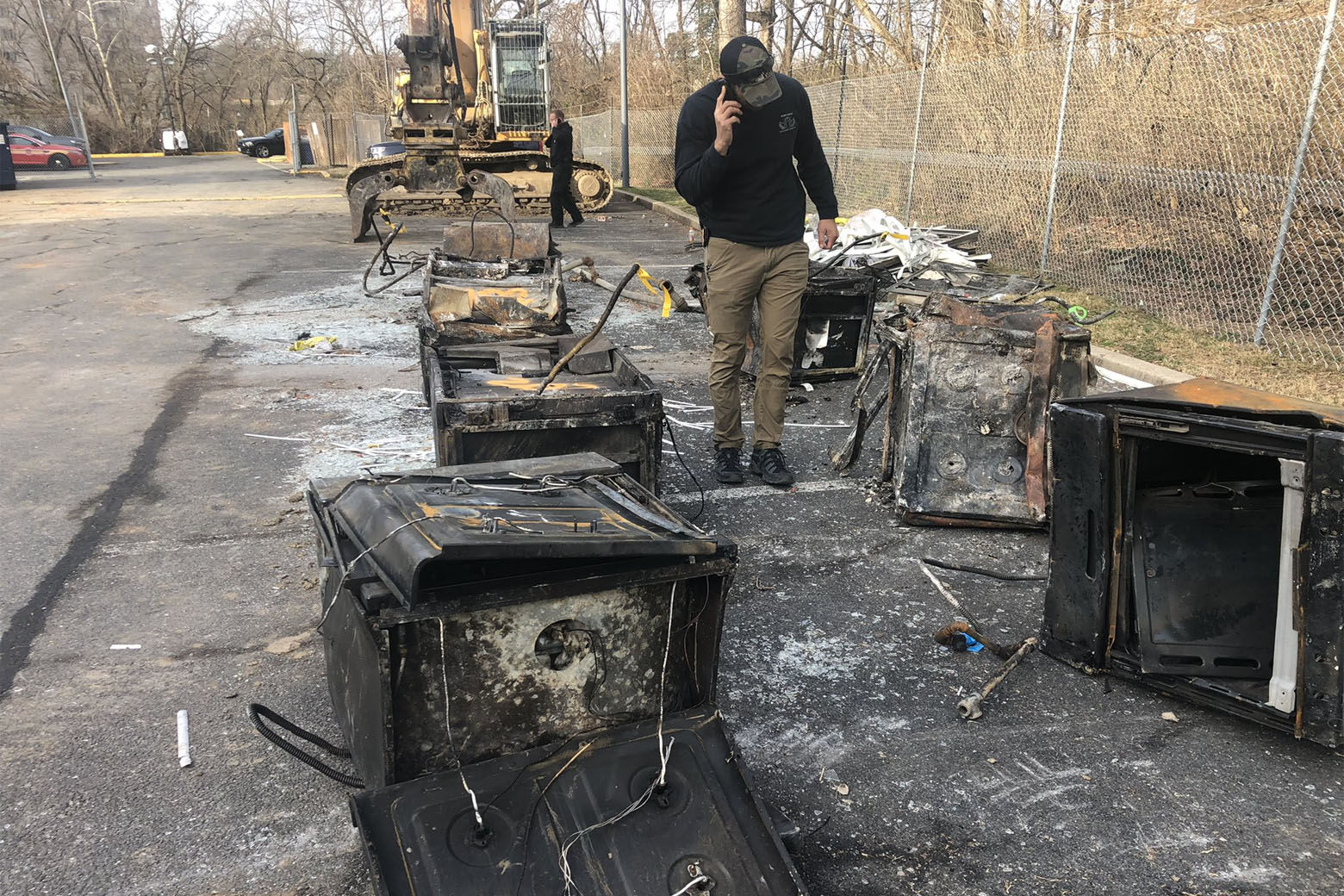
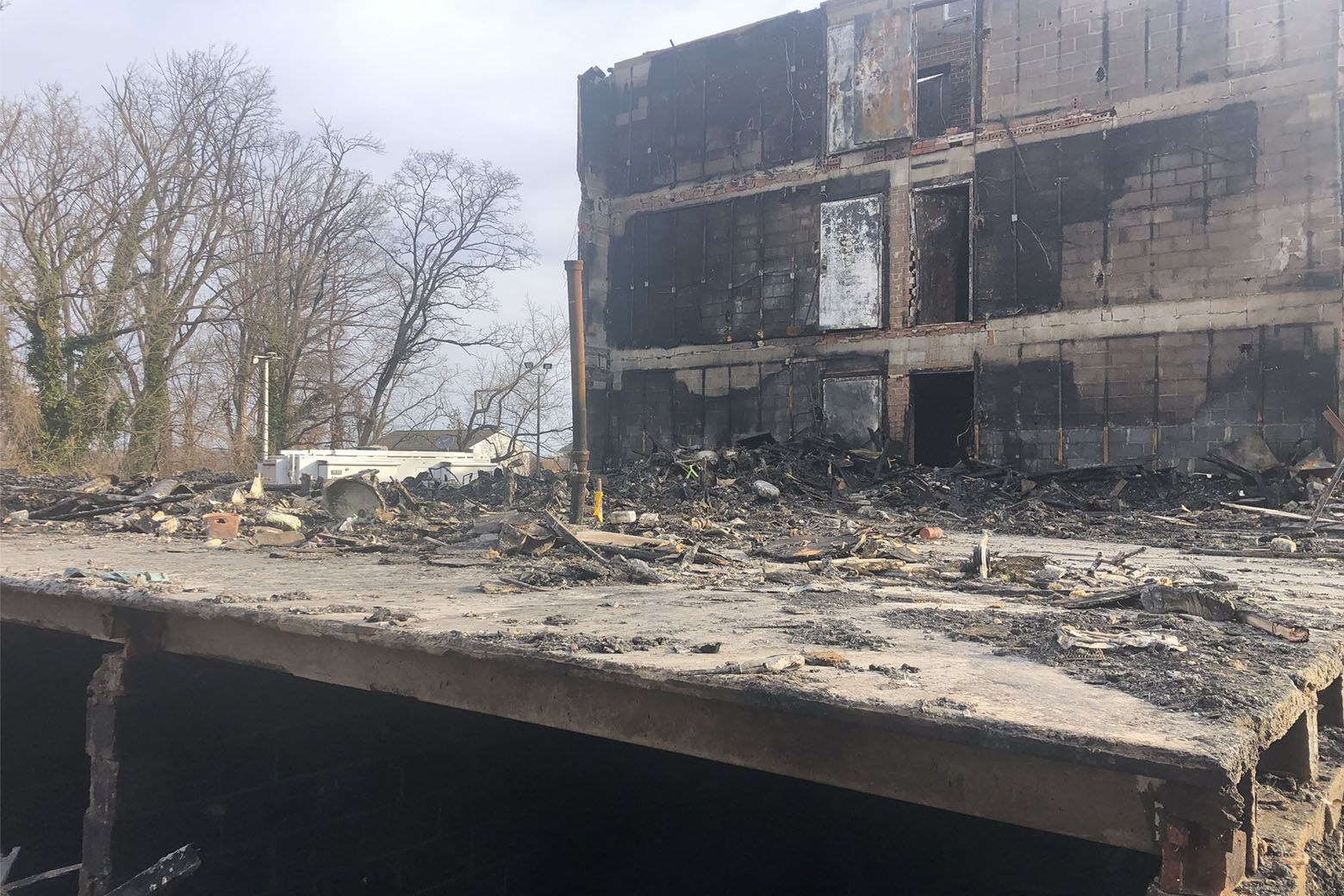
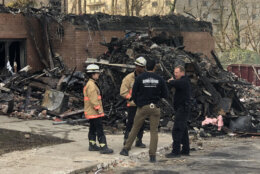
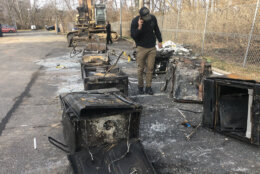
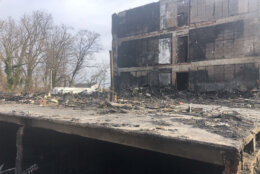
Montgomery County, Maryland, officials say the Silver Spring apartment blast that injured 14 people last week came after a maintenance worker trying to unclog a drain cut a gas pipe instead of a waste pipe, and the incident will be classified as an accident.
During a news conference Monday afternoon, Montgomery County Fire and Rescue Services Chief Scott Goldstein said two people remain hospitalized after the blast, including one person who remains in critical condition. The other person remains hospitalized for a medical condition unrelated to the blast, Goldstein said.
The fire department remains the lead on the investigation, Goldstein said, and is wrapping up its investigation at the site of the blast.
The department is unable to say the exact ignition source for the blaze, Goldstein told reporters. He characterized the fire that broke out on an apartment on the first floor as a “flash thermal event” or “flash fire” that broke out shortly after the gas pipe was cut and several seconds before the massive explosion rocked the apartment building at 2405 Lyttonsville Road.
“We are unable to pinpoint what it would be,” Goldstein said of the ignition that caused the fire on the first floor. Flipping a light switch, turning on the pilot light of an appliance, or turning on a power tool are all possible sources,” he said.
“All kinds of things make the opportunity for a spark or ignition source, which is why we won’t and have been unable to determine what the ignition source was,” Goldstein said.
While 14 people were injured, including the maintenance worker, there have been no reported deaths, officials say.
Dogs trained to detect the presence of human remains had twice alerted to a spot in the rubble on Friday, but Goldstein said additional searches over the weekend did not turn up anything further.
“We are confident and comfortable in saying there is nobody in the front of the building, tragically, when this blast occurred, who is a victim of this blast,” he said, saying the dogs may have been thrown off by a glove in the rubble.
All the residents of the Friendly Garden Apartments have been accounted for.
Flash fire — then explosion
During the news conference Monday, Goldstein provided a step-by-step accounting of the moments leading up to the blast.
Before cutting the gas pipe, the maintenance worker was assisting a resident in the first-floor apartment with a clogged drain, Goldstein said.
The worker used a “snake” to attempt to remove the debris and then went down into the basement level of the building and cut a 1.5-inch gas pipe, which he apparently mistook for a waste drain pipe, Goldstein said. After cutting the pipe, the worker put a cap on it and returned to the first floor apartment.
Goldstein said that because of the pressure at which the gas travel through the pipe, the worker wouldn’t necessarily have known he cut a gas pipe.
“You’re not going to hear a loud hissing and you’re not going to have a rush of gas coming out,” he said.
Once back inside the apartment on the first floor, the “flash fire” occurred, Goldstein said, which injured the resident. The maintenance worker and resident began to exit the apartment and were in a stairwell when the building was rocked by the explosion less than a minute later.
That initial flash fire “may have left another source of ignition or something charred or smoldering, which then led to the follow-on significant explosion that we all see on the videotape,” Goldstein said.
County Executive Marc Elrich suggested the county take a look at regulations to require gas pipes in older buildings be properly labeled. The Friendly Garden Apartments were built in 1971. The gas pipes appeared “indistinguishable” from other types of pipes in the basement utility area, Elrich said.
“The most immediate thing I think is to get the pipes labeled so that there’s no excuse for somebody cutting into a gas pipe again,” Elrich said.
He said he also wants to examine the training of maintenance personnel.
“Do you hire somebody who doesn’t know the difference between the gas pipe and a water pipe?” Elrich said. “Should that person be working on plumbing, potentially gas lines, if they’re not familiar with what’s in the basement?”
Donations near half-a-million-dollar-mark
Overall, a total of 41 families — including 124 adults and 36 children across three of the apartment complex’s six buildings — were displaced by the blast.
An emergency shelter at the White Oak Community Recreation Center will remain open until Thursday, said Raymond Crowel, the head of the county’s Department of Health and Human Services.
“We’re working long-term and short-term to help folks with housing needs,” he said.
Starting Tuesday, the county will set up a Disaster Assistance Center at the nearby Gwendolyn E. Coffield Recreation Center to connect residents with services “to get their lives back on track,” Crowel said.
That includes free legal services, filling out loss and property claims, financial and food assistance, mental health support, and help getting new ID cards, passports and other vital records, Crowel said.
A fund set up by the Montgomery Housing Partnership to help residents now tops $460,000, and checks are expected to be handed out to residents starting this week.
Patrick Campbell, with the county’s Department of Health and Human Services, said earlier Monday that the county is working with the Red Cross and several other nonprofits to make sure residents have the necessary resources.
“The most important thing right now — it’s kind of the first step in their recovery — is finding long-term housing,” Campbell said. “This is a community that has a high need there. … A lot of them live in subsidized housing, so there isn’t a large pool of housing, especially in the neighborhood where they live. So that is our most critical need.”
As far as donations go, “Cash is king,” Campbell said. “The reason why is it allows these folks the dignity to pick the items they want or need.”
Cash allows people to replace things that can’t be easily planned for, and giving people who have experienced disasters cash payments helps build a mutually trusting relationship.
“We trust them to know what they need for their recovery,” Campbell said. “And cash allows us to say that to them.”



